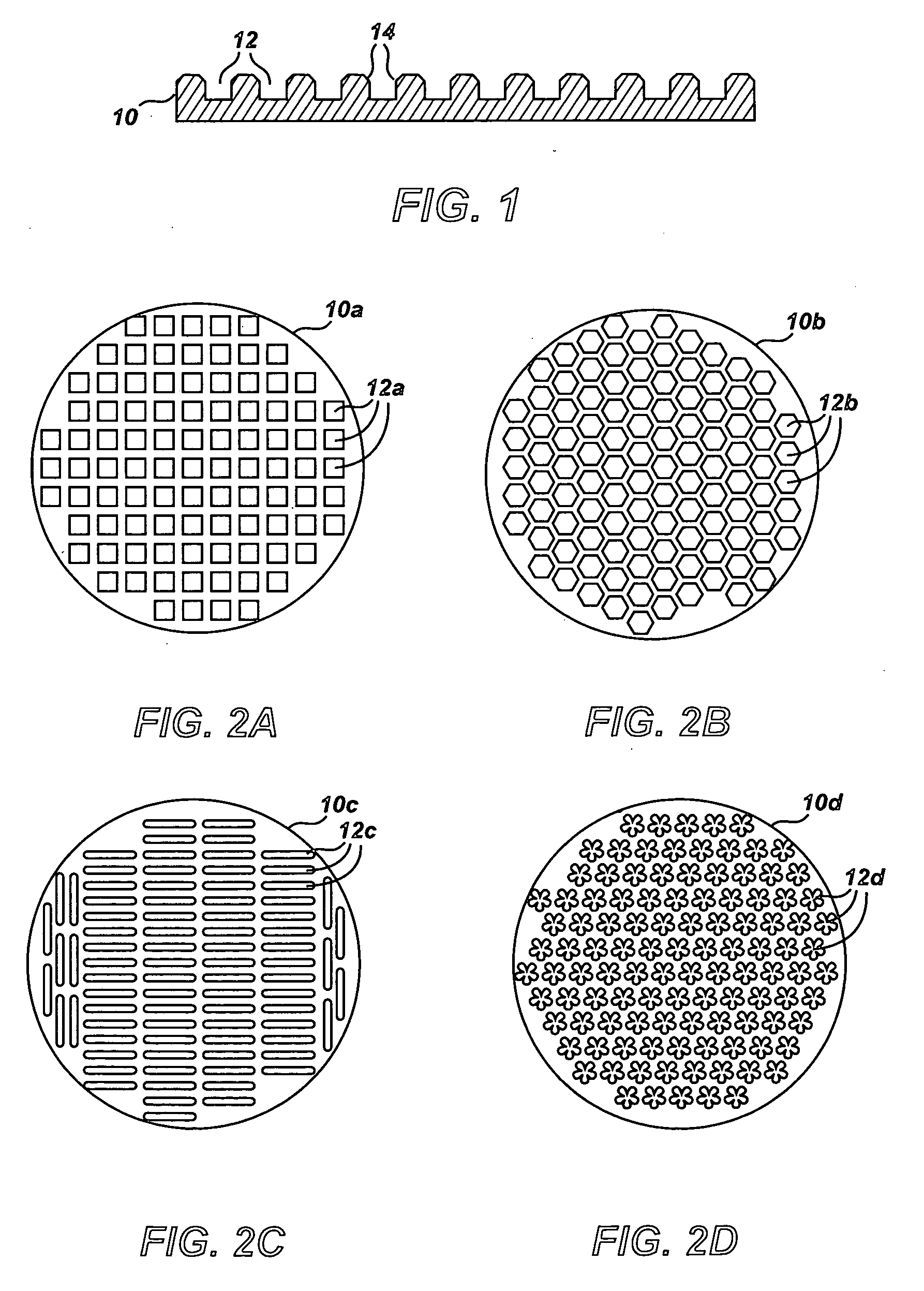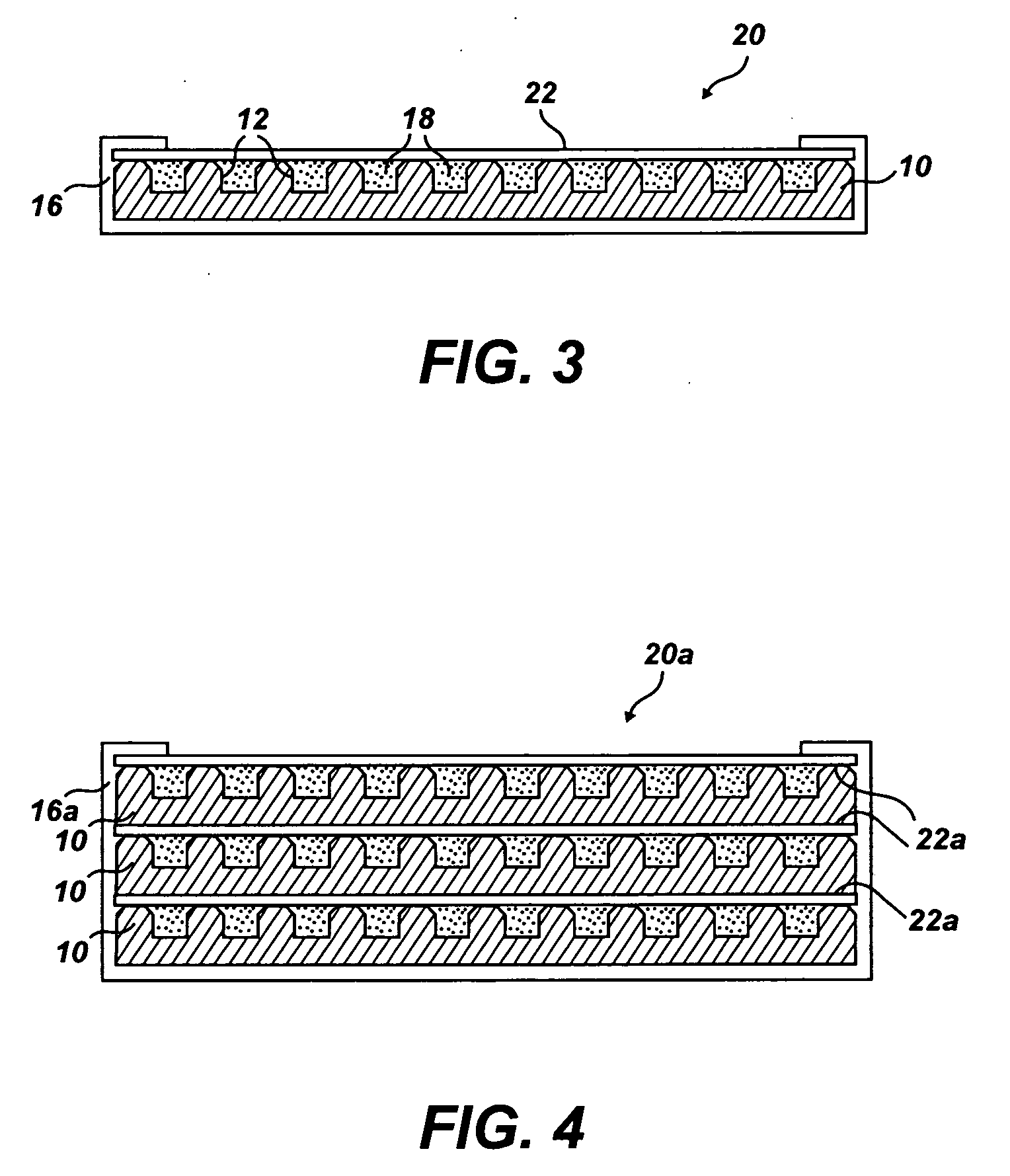Shaped thermally stable polycrystalline material and associated methods of manufacture
a thermally stable, polycrystalline technology, applied in the direction of manufacturing tools, grinding devices, other chemical processes, etc., can solve the problems of insufficient thermal strength of natural diamond, and insufficient micro-chipping of natural diamond, so as to prolong the service life of various diamond tools, improve bonding, and optimally size
- Summary
- Abstract
- Description
- Claims
- Application Information
AI Technical Summary
Benefits of technology
Problems solved by technology
Method used
Image
Examples
example 1
[0061] A diamond feed was prepared by mixing diamond having an average size of 25-45 microns, CBN powder of average size of 3 microns, silicon powder of average size of 5 microns, boron powder of average size of 1 micron, and titanium powder of average size of 2 microns in a content ratio of 80:3:12:2:3 wt %. At the same time, a reaction-cup assembly and the associated parts were also prepared such as honeycomb discs (similar to FIG. 2B), molybdenum discs, graphite discs, and a tantalum cup. The honeycomb disc was made with graphite and was first loaded into a bottom of the tantalum cup. Diamond feed was filled into the cavity and a moly disc, graphite disc, and a moly disc were loaded, respectively. Subsequently, another honeycomb graphite disc followed by diamond feed loading and loading of one moly disc, one graphite disc, and another moly disc were loaded in order. Another set of honeycomb graphite disc, diamond, moly disc, graphite disc, and a moly disc were loaded before crimp...
example 2
[0064] The test of Example 1 was repeated with a honeycomb disc that is made out of ceramic material. The honeycomb disc with elongated circular holes was prepared by slicing an extruded alumina disc with circular holes. The diamond feed composition was prepared at a different weight ratio from Example 1. Specifically, the weight ratio of diamond:CBN:Si:B:Ni was 70:2:20:3:5 wt %. Similar elongated TSP grits were obtained (similar to FIG. 6D) and their microstructure was quite normal and a simple tool test indicated normal properties meeting standard TSP quality.
example 3
[0065] With the same type of diamond feed material prepared from mixed powder of diamond, CBN, silicon, titanium, boron as described in Example 1, the round and thin (about 3 mm thick) graphite discs with a cavity of different shape patterns like needle like, continuous chain-like, and a flower pattern was prepared. This patterned graphite disc was first loaded into the tantalum cup and diamond feed was then loaded into the cavity and the cup was crimped closed. Another cup was loaded with patterned graphite disc and diamond feed was loaded, but this cup had one additional graphite disc to have two layers of diamond loaded disc inside the same cup. Both cups were assembled into the standard HPHT cell for HPHT processing.
[0066] After the HPHT processing under the short pressing cycle time, two cups were recovered from the cell and many individually shaped TSP materials were also recovered from the graphite disc without difficulty having shapes similar to those shown in FIGS. 6C, 6D,...
PUM
| Property | Measurement | Unit |
|---|---|---|
| temperature | aaaaa | aaaaa |
| sizes | aaaaa | aaaaa |
| temperatures | aaaaa | aaaaa |
Abstract
Description
Claims
Application Information
 Login to View More
Login to View More - R&D
- Intellectual Property
- Life Sciences
- Materials
- Tech Scout
- Unparalleled Data Quality
- Higher Quality Content
- 60% Fewer Hallucinations
Browse by: Latest US Patents, China's latest patents, Technical Efficacy Thesaurus, Application Domain, Technology Topic, Popular Technical Reports.
© 2025 PatSnap. All rights reserved.Legal|Privacy policy|Modern Slavery Act Transparency Statement|Sitemap|About US| Contact US: help@patsnap.com



